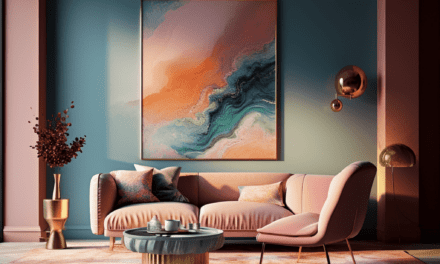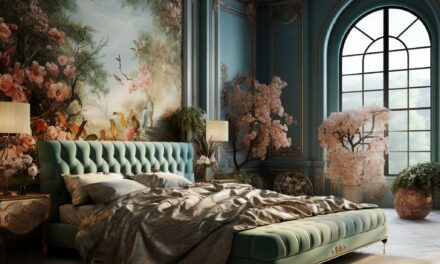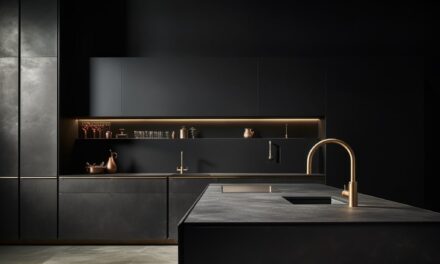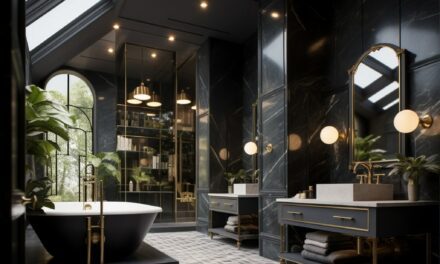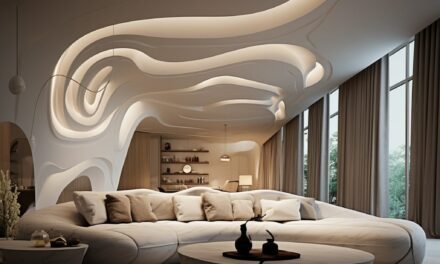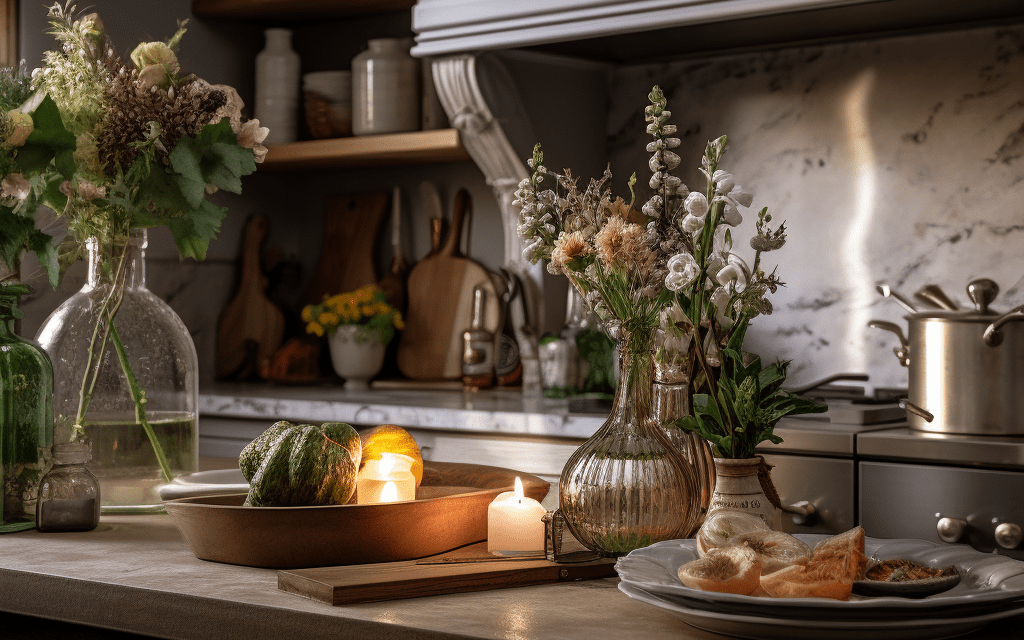Vignettes are a popular design technique that can add character, interest, and depth to any room. But what exactly is a vignette in interior design?
In simple terms, a vignette is a collection of objects arranged in a thoughtful and visually pleasing way. The objects are often related by theme, color, or texture, and arranged in a way that creates a balanced and harmonious composition.
But vignettes are more than just a simple grouping of objects. They can tell a story, evoke emotion, and highlight key features of a space. With the right selection, arrangement, and placement, a vignette can become a focal point in a room, drawing the eye and adding visual interest.
What Is a Vignette in Interior Design?
A vignette is a curated display of objects that tell a story and create a visually appealing arrangement in a room.
Vignettes are used in interior design to add character, warmth, and personality to a space. They can be created in any area of a room, from the coffee table in the living room to the nightstand in the bedroom.
The process of creating a vignette involves selecting objects that have personal meaning, arranging them harmoniously, and considering balance and proportion. When done correctly, a vignette can enhance the overall aesthetics of a space and create a focal point.
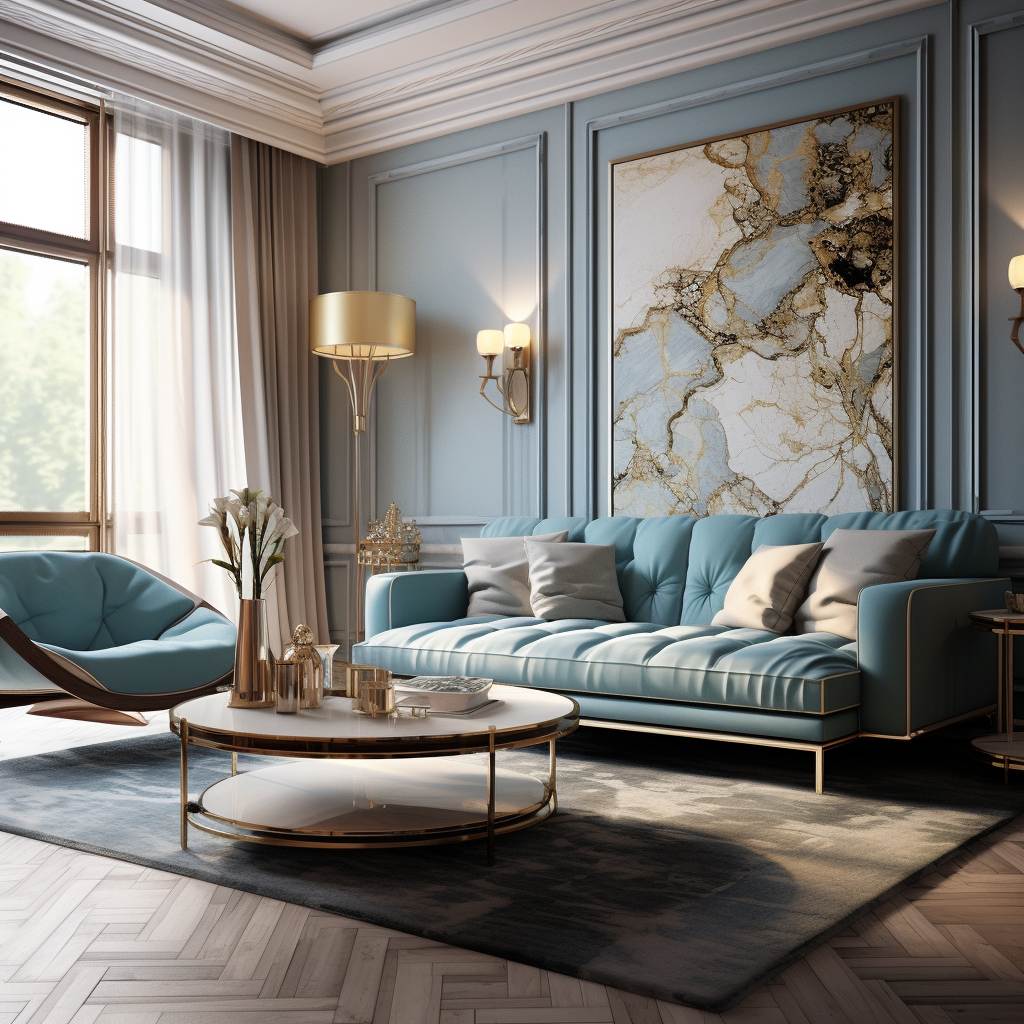
Creating Vignettes in Home Decor
To style a vignette, start by selecting a focal point. This could be a piece of artwork, a vase of flowers, or a unique object that holds personal significance. Once you have a focal point, select complementary objects that vary in height, texture, and color. For example, pair a stack of books with a decorative tray and a small plant.
When arranging objects, consider balance and proportion. Place larger objects at the back and smaller objects at the front. Vary the heights of objects to create visual interest. Don’t be afraid to experiment with different arrangements until you find one that feels right.
Another important factor to keep in mind when creating a vignette is the overall style of the room. A minimalist vignette may include a few carefully chosen objects, while a bohemian vignette may incorporate bright colors and bold patterns. Consider the function of the room when selecting objects and arranging them.
Vignettes can be changed and updated regularly to reflect your personal style and interests. Experiment with different objects, textures, and arrangements until you create a vignette that feels right for you.
The Importance of Vignettes in Interior Design
Vignettes are more than just visually appealing arrangements of objects. They can add character, tell a story, and evoke emotions within a space. By creating a focal point and guiding the eye towards a specific area, vignettes can enhance the overall cohesion of a room’s design.
One of the key benefits of vignettes is their ability to create a personalized touch in a space. By displaying treasured objects such as family heirlooms, photographs, and artwork, vignettes can add warmth to a room and showcase the interests and personality of the homeowner.
Vignettes can also be used to highlight specific features of a space. By arranging decorative objects around a fireplace or window, for example, a vignette can draw attention to these areas and create a striking focal point. This can also help balance out an asymmetrical room or accentuate an architectural feature.
Another advantage of vignettes is their versatility. They can be incorporated into any room of the home, from the entryway to the bedroom, and can be styled according to any theme. Whether you want to create a rustic, minimalist, or vintage vibe, vignettes can add interest and depth to your overall design.
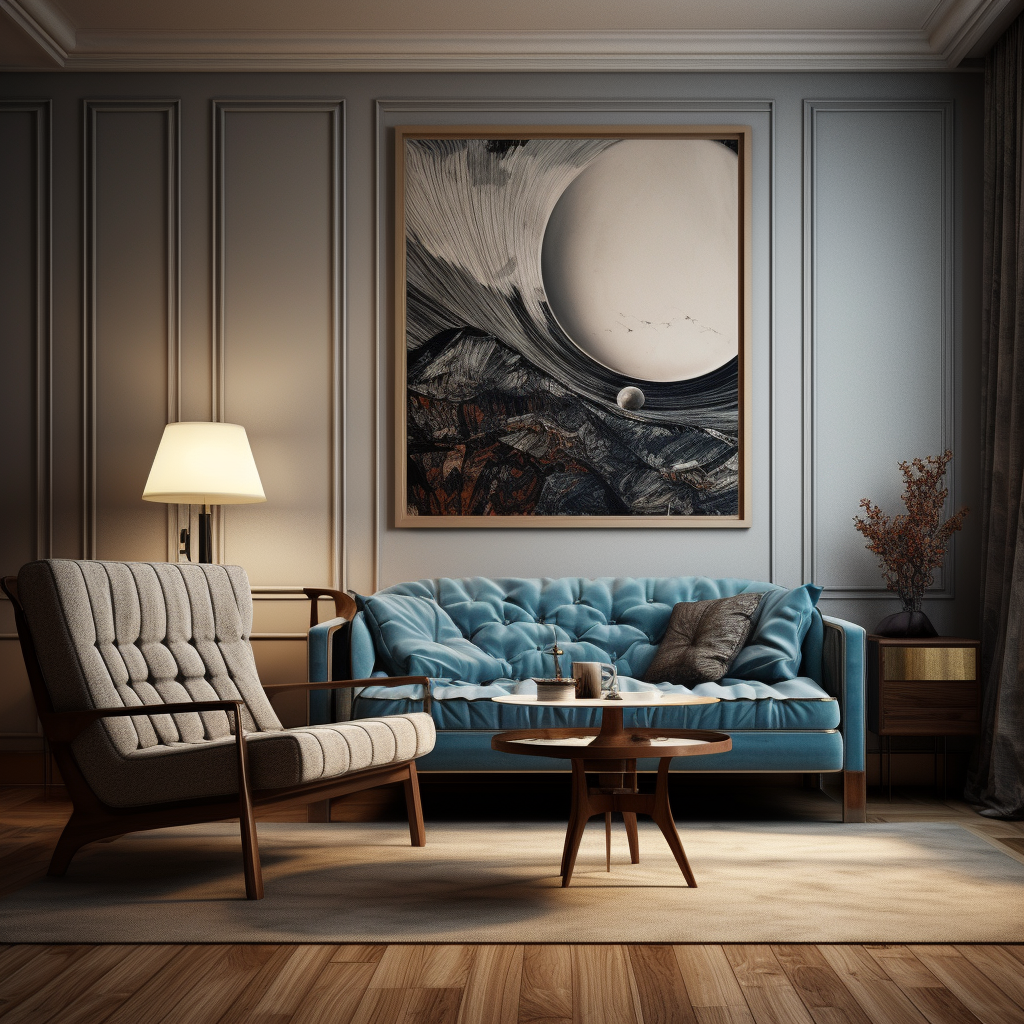

Inspiring Vignette Ideas for Interior Design
If you’re feeling stuck on how to incorporate vignettes into your home decor, don’t worry! We’ve put together a list of inspiring vignette ideas to spark your creativity.
Vintage Vignette
Bring a touch of nostalgia to your space by creating a vintage vignette. Start with a few antique items, such as a vintage camera or typewriter, and add in some old books or photographs. Display them on a wooden tray or vintage suitcase for added charm.
| Objects to consider: | How to arrange: |
|---|---|
| Antique camera | On left side of tray |
| Typewriter | On right side of tray |
| Old books | Stacked in middle of tray |
| Photographs | Propped up against books |
Minimalist Vignette
For a clean and simple look, try a minimalist vignette. Choose a few neutral items, such as a vase with fresh flowers and a small sculpture, and display them on a white or clear surface.
| Objects to consider: | How to arrange: |
|---|---|
| Vase with fresh flowers | On left side of surface |
| Small sculpture | On right side of surface |
Botanical Vignette
Bring the beauty of nature indoors with a botanical vignette. Choose a few potted plants, such as succulents or herbs, and display them along with some botanical prints or a nature-inspired sculpture.
| Objects to consider: | How to arrange: |
|---|---|
| Potted plants | Group them together on a table or shelf |
| Botanical prints | Hang them on the wall behind the plants |
| Nature-inspired sculpture | Place it on a nearby surface |
Remember, the key to creating a compelling vignette is to choose objects that complement each other and tell a cohesive story. Don’t be afraid to mix and match styles and textures, and don’t forget to consider the overall balance and proportion of the arrangement.
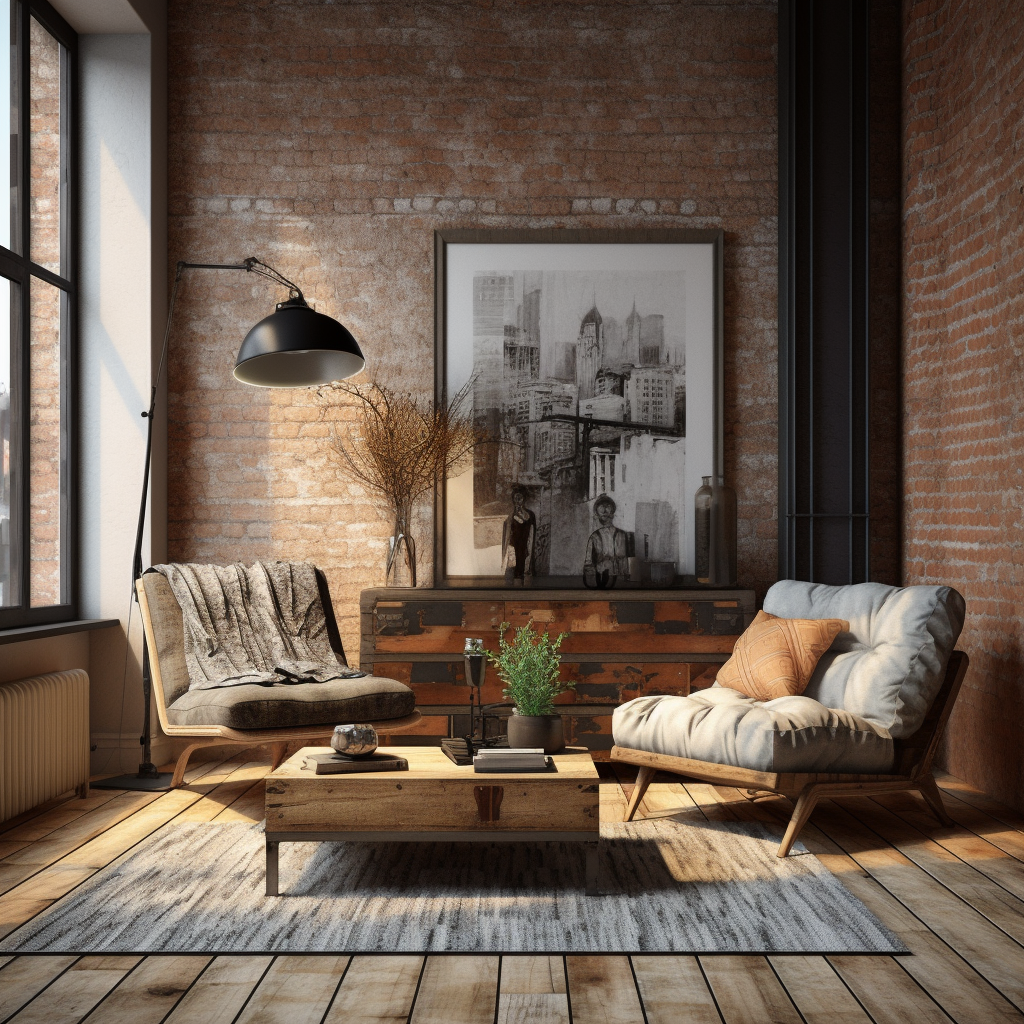

Tips for Designing Vignettes
Designing a vignette is all about creating a harmonious and visually appealing arrangement. Here are some practical tips to help you design stunning vignettes:
Select a Focal Point
Every vignette should have a focal point – an object or element that draws the eye and anchors the arrangement. It could be a piece of artwork, a sculpture, or a unique decorative item. When selecting your focal point, think about the scale and proportion, and ensure it complements the surrounding objects.
Use Varied Heights and Textures
Introducing objects of different heights and textures adds depth and interest to the vignette. Mix and match items such as candles, books, plants, and decorative boxes to create a diverse and visually engaging display. Consider creating visual balance by echoing certain colors or repeating shapes throughout the arrangement.
Get Personal
Adding personal touches to your vignette helps to make it unique and meaningful. Incorporate items such as family photographs, travel mementos, or treasured heirlooms to add a personal touch and create a sense of warmth and personality.
Consider Lighting
The right lighting can highlight and enhance your vignette, creating a warm and inviting ambiance. Consider using accent lighting such as tabletop lamps, sconces, or candles to create a cozy and intimate atmosphere.
Keep it Simple
When it comes to designing a vignette, less is often more. Avoid overloading the arrangement with too many objects, as this can create a cluttered and chaotic look. Instead, focus on a few carefully curated items that complement each other and create a cohesive visual narrative.
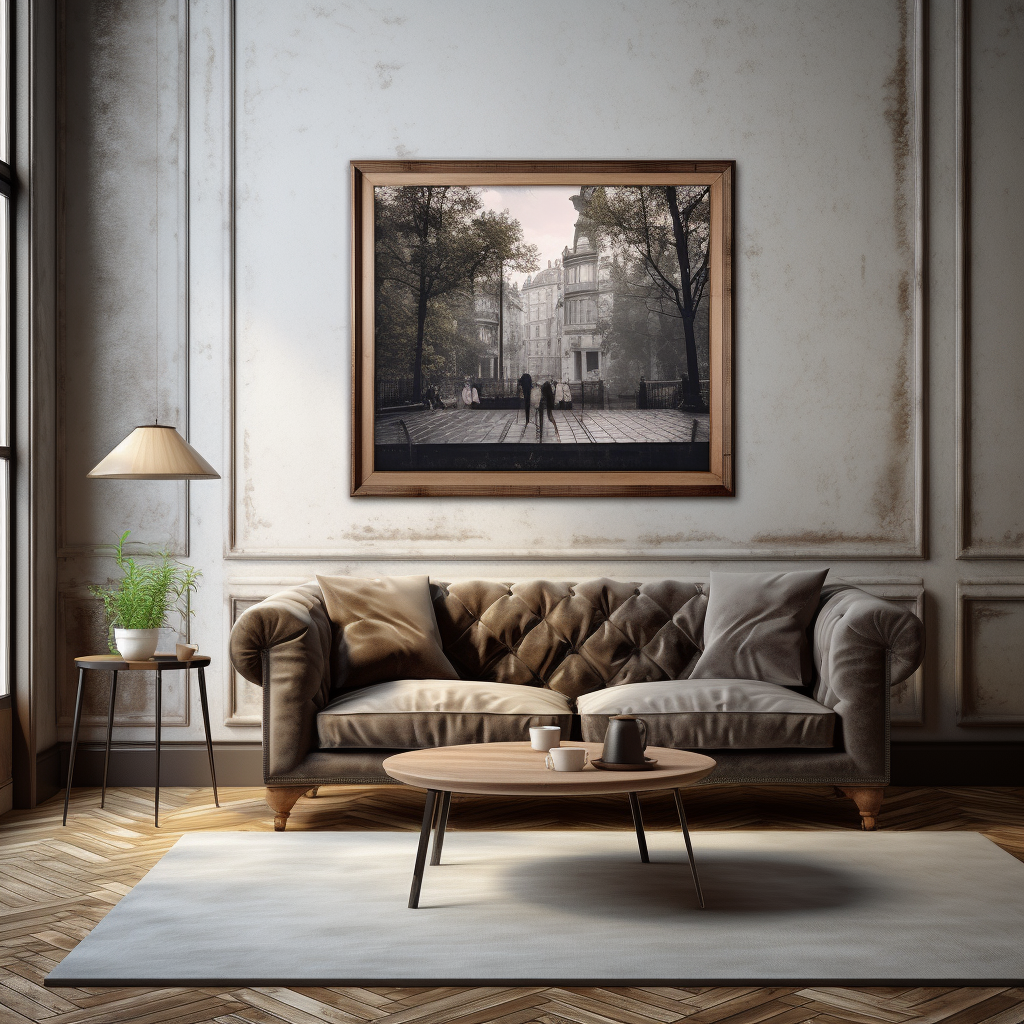

Using Vignettes in Home Staging
Incorporating vignettes into home staging can be a powerful tool for creating an emotional connection with potential buyers. When utilized effectively, vignettes can add warmth and personality to staged spaces, highlight key features of a property, and create an overall sense of cohesion.
When designing vignettes for home staging, it’s important to keep in mind the target audience and the style of the property. For example, a sleek modern vignette may be more appropriate for a contemporary urban apartment, while a rustic country-style vignette may be more fitting for a rural farmhouse.
Another important factor to consider is the placement of the vignette. Staged vignettes should be strategically placed in areas that will catch the buyer’s eye and draw attention to important features of the space. For example, a vignette placed on a coffee table can highlight the comfortable seating area, while a vignette placed on a fireplace mantel can draw attention to the fireplace as a key feature of the room.
When selecting objects for a vignette in home staging, it’s essential to choose items that are tasteful, stylish, and reflect the overall theme of the space. Avoid cluttering the vignette with too many items or using overly personal objects that may not appeal to potential buyers.
Finally, lighting plays an important role in showcasing vignettes in home staging. Consider using soft, ambient lighting to create a warm and welcoming atmosphere, or directional lighting to highlight specific objects within the vignette.
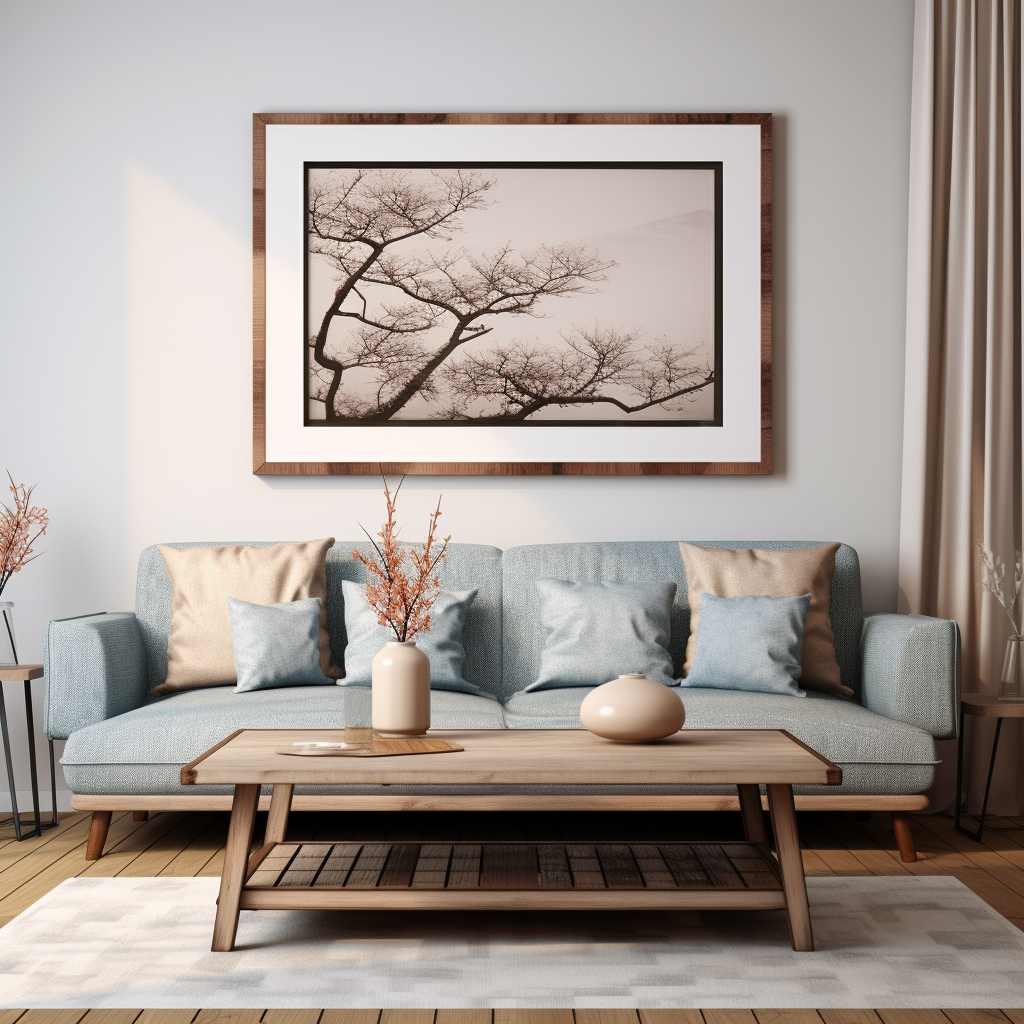

Incorporating Vignettes in Room Design
When designing a room, incorporating vignettes can add an extra layer of charm and visual interest. Here are some tips on how to seamlessly blend vignettes into your room design:
- Select the right location: Vignettes should be strategically placed in areas that command attention. Consider placing them on a prominent wall or on a piece of furniture that draws the eye.
- Consider style and function: Vignettes should complement the overall style of the room and serve a functional purpose. For example, a vignette on a console table in an entryway can double as a catch-all for keys and mail.
- Choose a focal point: Every vignette should have a focal point, whether it’s a piece of artwork, a unique object, or a grouping of items that tell a story.
- Create balance and proportion: Vignettes should be visually balanced, with items arranged in a way that feels harmonious to the eye. Consider using scale in your designs, and including objects of varying heights and textures to create depth and interest.
- Use lighting to enhance: Lighting can play a crucial role in highlighting a vignette’s impact. Consider using accent lighting, such as table lamps or wall sconces, to draw attention to the arrangement.
Example:
In a living room with a neutral color scheme, a vignette on the mantel could feature a large, statement piece of artwork as the focal point. Flank the artwork with a pair of matching table lamps to create balance, and incorporate smaller objects like candles or vases to add depth and interest.
Vignette Examples in Interior Design
Now that we’ve explored the concept and importance of vignettes in interior design, let’s take a look at some real-life examples to inspire your own home decor creations. From vintage to contemporary styles, here are some examples of stunning vignettes:
| Theme | Description | Image |
|---|---|---|
| Botanical | This vignette showcases a beautiful collection of potted plants arranged on a vintage wooden dresser, creating a natural and organic atmosphere in the space. | 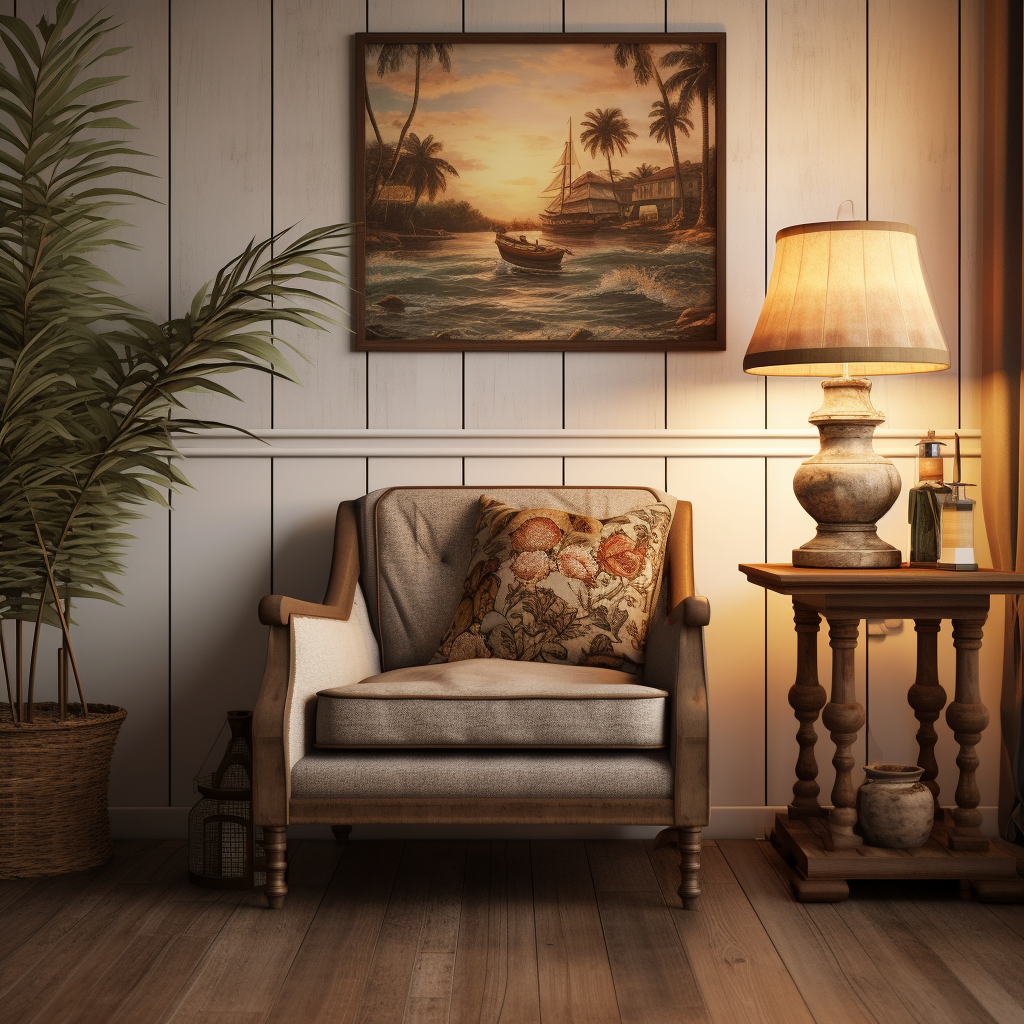  |
| Coastal | This vignette uses seashells and other beach-inspired decor to create a calming and peaceful coastal vibe. The use of a blue and white color scheme ties the vignette to the rest of the room’s design. | 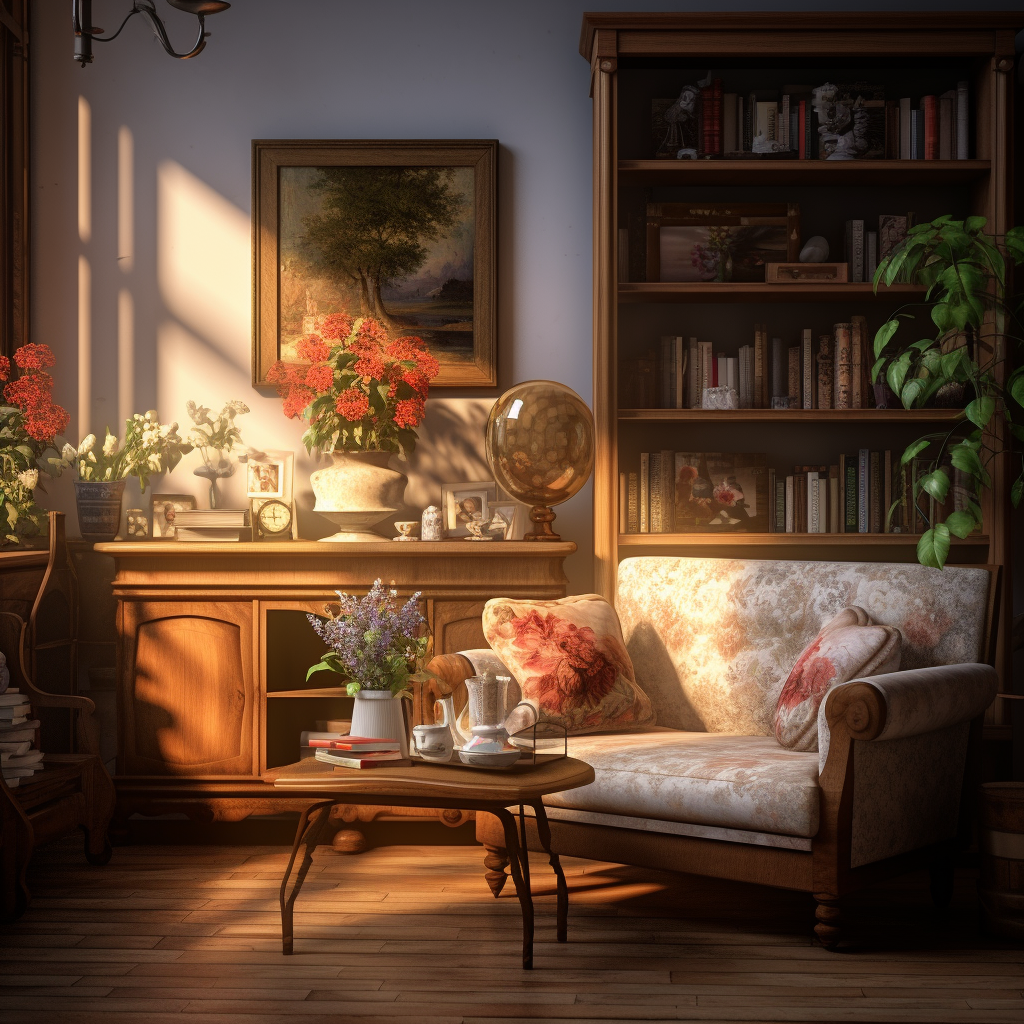  |
| Vintage | This vignette features a charming collection of vintage books, a vintage typewriter, and a framed black and white photograph. The use of a neutral color scheme and cohesive vintage elements creates a cohesive and stylish effect. | 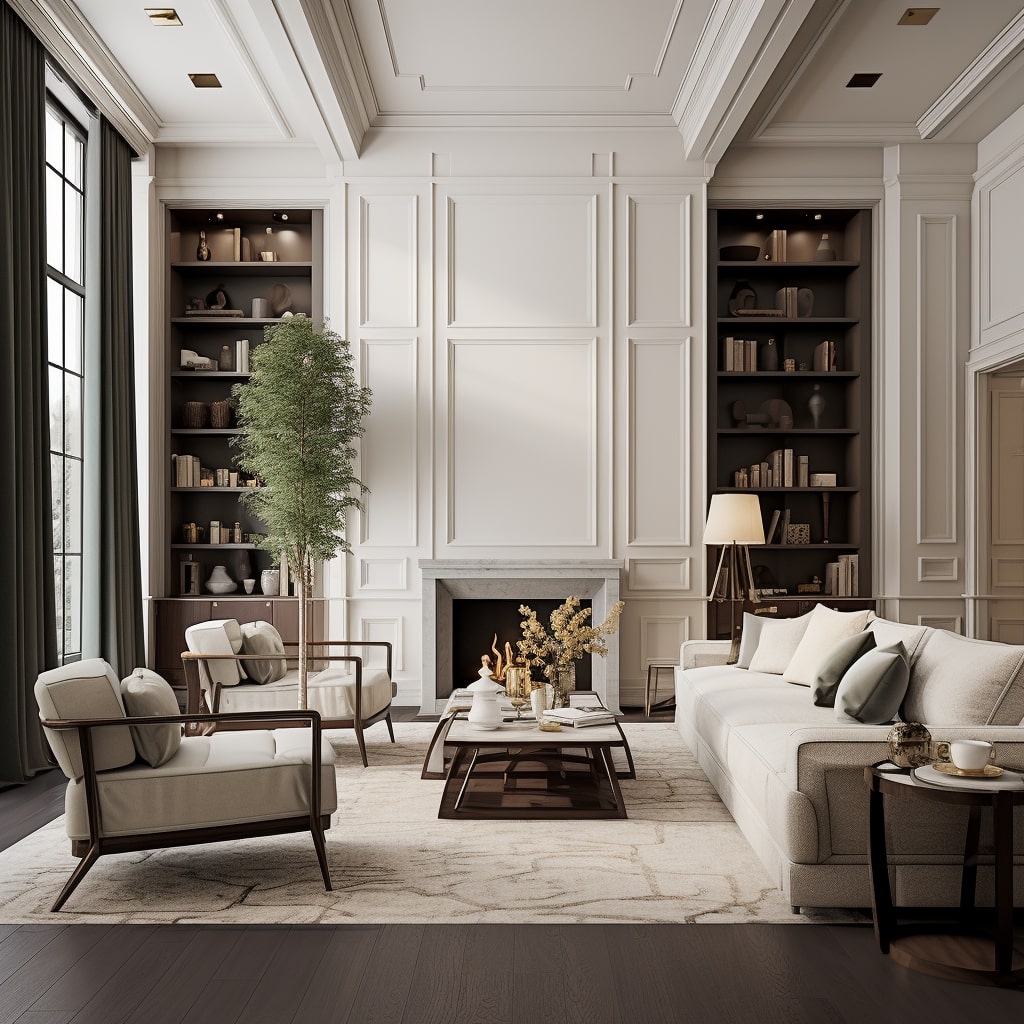  |
Remember, the key to creating a successful vignette is to curate a collection of items that share a common theme or color scheme, and arrange them thoughtfully using principles of balance, proportion, and visual interest. Experiment with different objects and arrangements until you find the perfect vignette for your space.
Frequently Asked Questions about Vignettes in Interior Design
Vignettes in interior design can elevate the aesthetics of any space, but there are several questions that one may have before incorporating them into their home or professional projects. Here, we’ve provided answers to some of the most frequently asked questions about vignettes in interior design.
What is a vignette in interior design?
A vignette in interior design is a visually appealing arrangement of objects that tells a story or evokes a specific emotion and serves as a focal point or decorative accent in a room. Vignettes can consist of any items, such as books, artworks, plants, and decorative items arranged in a harmonious and meaningful way.
What is the purpose of a vignette in interior design?
The purpose of a vignette in interior design is to add character and personality to a space, create visual interest and a focal point, and provide a cohesive narrative within a room. Vignettes can also evoke emotions and memories, showcase personal style, and highlight key features of a space.
How do I choose the objects for a vignette?
When selecting items for a vignette, it’s essential to consider the overall style and function of the room, as well as personal taste and interests. Choose items that tell a story or have sentimental value, such as family heirlooms or memorabilia. Consider varying the heights, textures, and colors of the items to create a dynamic and visually balanced arrangement.
How do I style a vignette effectively?
To style a vignette effectively, start by selecting a focal point, such as an artwork or decorative item, and arrange other items around it in a harmonious and balanced way. Vary the heights and textures of the items, and consider using odd numbers of objects, which are more visually appealing and create a sense of movement. Finally, utilize lighting to enhance the impact of the vignette.
Where should I place a vignette in a room?
Vignettes can be placed anywhere in a room, depending on the desired effect and function of the space. Common spots for vignettes are on mantels, side tables, bookshelves, and entryway consoles. Consider the overall balance and flow of the room and place the vignette in a spot that enhances the room’s design and visual appeal.
Can vignettes be incorporated in home staging?
Yes, vignettes can be effectively utilized in home staging to create an emotional connection with potential buyers, highlight key features of a property, and add a touch of warmth and personality to staged spaces. Consider selecting items that enhance the style and function of the room, and arrange them in a visually appealing and harmonious way.

